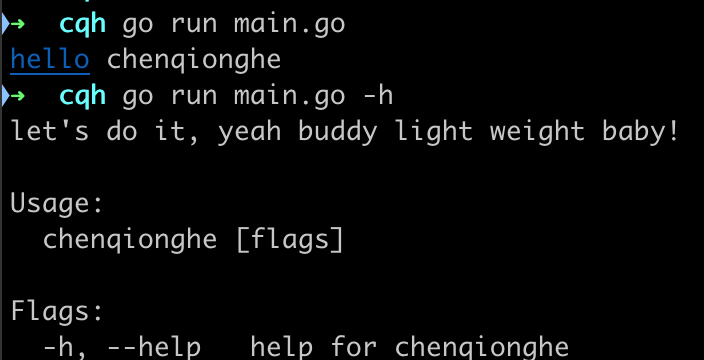springboot + aop + Lua分佈式限流的最佳實踐
- 2020 年 4 月 8 日
- 筆記
整理了一些Java方面的架構、面試資料(微服務、集群、分佈式、中間件等),有需要的小夥伴可以關注公眾號【程序員內點事】,無套路自行領取
一、什麼是限流?為什麼要限流?
不知道大家有沒有做過帝都的地鐵,就是進地鐵站都要排隊的那種,為什麼要這樣擺長龍轉圈圈?答案就是為了限流!因為一趟地鐵的運力是有限的,一下擠進去太多人會造成站台的擁擠、列車的超載,存在一定的安全隱患。同理,我們的程序也是一樣,它處理請求的能力也是有限的,一旦請求多到超出它的處理極限就會崩潰。為了不出現最壞的崩潰情況,只能耽誤一下大家進站的時間。
限流是保證系統高可用的重要手段!!!
由於互聯網公司的流量巨大,系統上線會做一個流量峰值的評估,尤其是像各種秒殺促銷活動,為了保證系統不被巨大的流量壓垮,會在系統流量到達一定閾值時,拒絕掉一部分流量。
限流會導致用戶在短時間內(這個時間段是毫秒級的)系統不可用,一般我們衡量系統處理能力的指標是每秒的QPS或者TPS,假設系統每秒的流量閾值是1000,理論上一秒內有第1001個請求進來時,那麼這個請求就會被限流。
二、限流方案
1、計數器
Java內部也可以通過原子類計數器AtomicInteger、Semaphore信號量來做簡單的限流。
// 限流的個數 private int maxCount = 10; // 指定的時間內 private long interval = 60; // 原子類計數器 private AtomicInteger atomicInteger = new AtomicInteger(0); // 起始時間 private long startTime = System.currentTimeMillis(); public boolean limit(int maxCount, int interval) { atomicInteger.addAndGet(1); if (atomicInteger.get() == 1) { startTime = System.currentTimeMillis(); atomicInteger.addAndGet(1); return true; } // 超過了間隔時間,直接重新開始計數 if (System.currentTimeMillis() - startTime > interval * 1000) { startTime = System.currentTimeMillis(); atomicInteger.set(1); return true; } // 還在間隔時間內,check有沒有超過限流的個數 if (atomicInteger.get() > maxCount) { return false; } return true; } 2、漏桶算法
漏桶算法思路很簡單,我們把水比作是請求,漏桶比作是系統處理能力極限,水先進入到漏桶里,漏桶里的水按一定速率流出,當流出的速率小於流入的速率時,由於漏桶容量有限,後續進入的水直接溢出(拒絕請求),以此實現限流。
3、令牌桶算法
令牌桶算法的原理也比較簡單,我們可以理解成醫院的挂號看病,只有拿到號以後才可以進行診病。
系統會維護一個令牌(token)桶,以一個恆定的速度往桶里放入令牌(token),這時如果有請求進來想要被處理,則需要先從桶里獲取一個令牌(token),當桶里沒有令牌(token)可取時,則該請求將被拒絕服務。令牌桶算法通過控制桶的容量、發放令牌的速率,來達到對請求的限制。
4、Redis + Lua
很多同學不知道Lua是啥?個人理解,Lua腳本和 MySQL數據庫的存儲過程比較相似,他們執行一組命令,所有命令的執行要麼全部成功或者失敗,以此達到原子性。也可以把Lua腳本理解為,一段具有業務邏輯的代碼塊。
而Lua本身就是一種編程語言,雖然redis 官方沒有直接提供限流相應的API,但卻支持了 Lua 腳本的功能,可以使用它實現複雜的令牌桶或漏桶算法,也是分佈式系統中實現限流的主要方式之一。
相比Redis事務,Lua腳本的優點:
- 減少網絡開銷: 使用
Lua腳本,無需向Redis發送多次請求,執行一次即可,減少網絡傳輸 - 原子操作:
Redis將整個Lua腳本作為一個命令執行,原子,無需擔心並發 - 復用:
Lua腳本一旦執行,會永久保存Redis中,,其他客戶端可復用
Lua腳本大致邏輯如下:
-- 獲取調用腳本時傳入的第一個key值(用作限流的 key) local key = KEYS[1] -- 獲取調用腳本時傳入的第一個參數值(限流大小) local limit = tonumber(ARGV[1]) -- 獲取當前流量大小 local curentLimit = tonumber(redis.call('get', key) or "0") -- 是否超出限流 if curentLimit + 1 > limit then -- 返回(拒絕) return 0 else -- 沒有超出 value + 1 redis.call("INCRBY", key, 1) -- 設置過期時間 redis.call("EXPIRE", key, 2) -- 返回(放行) return 1 end - 通過
KEYS[1]獲取傳入的key參數 - 通過
ARGV[1]獲取傳入的limit參數 redis.call方法,從緩存中get和key相關的值,如果為null那麼就返回0- 接着判斷緩存中記錄的數值是否會大於限制大小,如果超出表示該被限流,返回0
- 如果未超過,那麼該key的緩存值+1,並設置過期時間為1秒鐘以後,並返回緩存值+1
這種方式是本文推薦的方案,具體實現會在後邊做細說。
5、網關層限流
限流常在網關這一層做,比如Nginx、Openresty、kong、zuul、Spring Cloud Gateway等,而像spring cloud - gateway網關限流底層實現原理,就是基於Redis + Lua,通過內置Lua限流腳本的方式。
三、Redis + Lua 限流實現
下面我們通過自定義註解、aop、Redis + Lua 實現限流,步驟會比較詳細,為了小白能讓快速上手這裡啰嗦一點,有經驗的老鳥們多擔待一下。
1、環境準備
springboot 項目創建地址:https://start.spring.io,很方便實用的一個工具。
2、引入依賴包
pom文件中添加如下依賴包,比較關鍵的就是 spring-boot-starter-data-redis 和 spring-boot-starter-aop。
<dependencies> <dependency> <groupId>org.springframework.boot</groupId> <artifactId>spring-boot-starter-web</artifactId> </dependency> <dependency> <groupId>org.springframework.boot</groupId> <artifactId>spring-boot-starter-data-redis</artifactId> </dependency> <dependency> <groupId>org.springframework.boot</groupId> <artifactId>spring-boot-starter-aop</artifactId> </dependency> <dependency> <groupId>com.google.guava</groupId> <artifactId>guava</artifactId> <version>21.0</version> </dependency> <dependency> <groupId>org.springframework.boot</groupId> <artifactId>spring-boot-starter-test</artifactId> </dependency> <dependency> <groupId>org.apache.commons</groupId> <artifactId>commons-lang3</artifactId> </dependency> <dependency> <groupId>org.springframework.boot</groupId> <artifactId>spring-boot-starter-test</artifactId> <scope>test</scope> <exclusions> <exclusion> <groupId>org.junit.vintage</groupId> <artifactId>junit-vintage-engine</artifactId> </exclusion> </exclusions> </dependency> </dependencies> 3、配置application.properties
在 application.properties 文件中配置提前搭建好的 redis 服務地址和端口。
spring.redis.host=127.0.0.1 spring.redis.port=6379 4、配置RedisTemplate實例
@Configuration public class RedisLimiterHelper { @Bean public RedisTemplate<String, Serializable> limitRedisTemplate(LettuceConnectionFactory redisConnectionFactory) { RedisTemplate<String, Serializable> template = new RedisTemplate<>(); template.setKeySerializer(new StringRedisSerializer()); template.setValueSerializer(new GenericJackson2JsonRedisSerializer()); template.setConnectionFactory(redisConnectionFactory); return template; } } 限流類型枚舉類
/** * @author fu * @description 限流類型 * @date 2020/4/8 13:47 */ public enum LimitType { /** * 自定義key */ CUSTOMER, /** * 請求者IP */ IP; } 5、自定義註解
我們自定義個@Limit註解,註解類型為ElementType.METHOD即作用於方法上。
period表示請求限制時間段,count表示在period這個時間段內允許放行請求的次數。limitType代表限流的類型,可以根據請求的IP、自定義key,如果不傳limitType屬性則默認用方法名作為默認key。
/** * @author fu * @description 自定義限流註解 * @date 2020/4/8 13:15 */ @Target({ElementType.METHOD, ElementType.TYPE}) @Retention(RetentionPolicy.RUNTIME) @Inherited @Documented public @interface Limit { /** * 名字 */ String name() default ""; /** * key */ String key() default ""; /** * Key的前綴 */ String prefix() default ""; /** * 給定的時間範圍 單位(秒) */ int period(); /** * 一定時間內最多訪問次數 */ int count(); /** * 限流的類型(用戶自定義key 或者 請求ip) */ LimitType limitType() default LimitType.CUSTOMER; } 6、切面代碼實現
/** * @author fu * @description 限流切面實現 * @date 2020/4/8 13:04 */ @Aspect @Configuration public class LimitInterceptor { private static final Logger logger = LoggerFactory.getLogger(LimitInterceptor.class); private static final String UNKNOWN = "unknown"; private final RedisTemplate<String, Serializable> limitRedisTemplate; @Autowired public LimitInterceptor(RedisTemplate<String, Serializable> limitRedisTemplate) { this.limitRedisTemplate = limitRedisTemplate; } /** * @param pjp * @author fu * @description 切面 * @date 2020/4/8 13:04 */ @Around("execution(public * *(..)) && @annotation(com.xiaofu.limit.api.Limit)") public Object interceptor(ProceedingJoinPoint pjp) { MethodSignature signature = (MethodSignature) pjp.getSignature(); Method method = signature.getMethod(); Limit limitAnnotation = method.getAnnotation(Limit.class); LimitType limitType = limitAnnotation.limitType(); String name = limitAnnotation.name(); String key; int limitPeriod = limitAnnotation.period(); int limitCount = limitAnnotation.count(); /** * 根據限流類型獲取不同的key ,如果不傳我們會以方法名作為key */ switch (limitType) { case IP: key = getIpAddress(); break; case CUSTOMER: key = limitAnnotation.key(); break; default: key = StringUtils.upperCase(method.getName()); } ImmutableList<String> keys = ImmutableList.of(StringUtils.join(limitAnnotation.prefix(), key)); try { String luaScript = buildLuaScript(); RedisScript<Number> redisScript = new DefaultRedisScript<>(luaScript, Number.class); Number count = limitRedisTemplate.execute(redisScript, keys, limitCount, limitPeriod); logger.info("Access try count is {} for name={} and key = {}", count, name, key); if (count != null && count.intValue() <= limitCount) { return pjp.proceed(); } else { throw new RuntimeException("You have been dragged into the blacklist"); } } catch (Throwable e) { if (e instanceof RuntimeException) { throw new RuntimeException(e.getLocalizedMessage()); } throw new RuntimeException("server exception"); } } /** * @author fu * @description 編寫 redis Lua 限流腳本 * @date 2020/4/8 13:24 */ public String buildLuaScript() { StringBuilder lua = new StringBuilder(); lua.append("local c"); lua.append("nc = redis.call('get',KEYS[1])"); // 調用不超過最大值,則直接返回 lua.append("nif c and tonumber(c) > tonumber(ARGV[1]) then"); lua.append("nreturn c;"); lua.append("nend"); // 執行計算器自加 lua.append("nc = redis.call('incr',KEYS[1])"); lua.append("nif tonumber(c) == 1 then"); // 從第一次調用開始限流,設置對應鍵值的過期 lua.append("nredis.call('expire',KEYS[1],ARGV[2])"); lua.append("nend"); lua.append("nreturn c;"); return lua.toString(); } /** * @author fu * @description 獲取id地址 * @date 2020/4/8 13:24 */ public String getIpAddress() { HttpServletRequest request = ((ServletRequestAttributes) RequestContextHolder.getRequestAttributes()).getRequest(); String ip = request.getHeader("x-forwarded-for"); if (ip == null || ip.length() == 0 || UNKNOWN.equalsIgnoreCase(ip)) { ip = request.getHeader("Proxy-Client-IP"); } if (ip == null || ip.length() == 0 || UNKNOWN.equalsIgnoreCase(ip)) { ip = request.getHeader("WL-Proxy-Client-IP"); } if (ip == null || ip.length() == 0 || UNKNOWN.equalsIgnoreCase(ip)) { ip = request.getRemoteAddr(); } return ip; } } 7、控制層實現
我們將@Limit註解作用在需要進行限流的接口方法上,下邊我們給方法設置@Limit註解,在10秒內只允許放行3個請求,這裡為直觀一點用AtomicInteger計數。
/** * @Author: fu * @Description: */ @RestController public class LimiterController { private static final AtomicInteger ATOMIC_INTEGER_1 = new AtomicInteger(); private static final AtomicInteger ATOMIC_INTEGER_2 = new AtomicInteger(); private static final AtomicInteger ATOMIC_INTEGER_3 = new AtomicInteger(); /** * @author fu * @description * @date 2020/4/8 13:42 */ @Limit(key = "limitTest", period = 10, count = 3) @GetMapping("/limitTest1") public int testLimiter1() { return ATOMIC_INTEGER_1.incrementAndGet(); } /** * @author fu * @description * @date 2020/4/8 13:42 */ @Limit(key = "customer_limit_test", period = 10, count = 3, limitType = LimitType.CUSTOMER) @GetMapping("/limitTest2") public int testLimiter2() { return ATOMIC_INTEGER_2.incrementAndGet(); } /** * @author fu * @description * @date 2020/4/8 13:42 */ @Limit(key = "ip_limit_test", period = 10, count = 3, limitType = LimitType.IP) @GetMapping("/limitTest3") public int testLimiter3() { return ATOMIC_INTEGER_3.incrementAndGet(); } } 8、測試
測試預期:連續請求3次均可以成功,第4次請求被拒絕。接下來看一下是不是我們預期的效果,請求地址:http://127.0.0.1:8080/limitTest1,用postman進行測試,有沒有postman url直接貼瀏覽器也是一樣。
可以看到第四次請求時,應用直接拒絕了請求,說明我們的 Springboot + aop + lua 限流方案搭建成功。
總結
以上 springboot + aop + Lua 限流實現是比較簡單的,旨在讓大家認識下什麼是限流?如何做一個簡單的限流功能,面試要知道這是個什麼東西。上面雖然說了幾種實現限流的方案,但選哪種還要結合具體的業務場景,不能為了用而用。
小福利:
獲取到一些極客付費課程 ,噓~,免費 送給小夥伴們。關注公眾號回復【極客】自行領取


